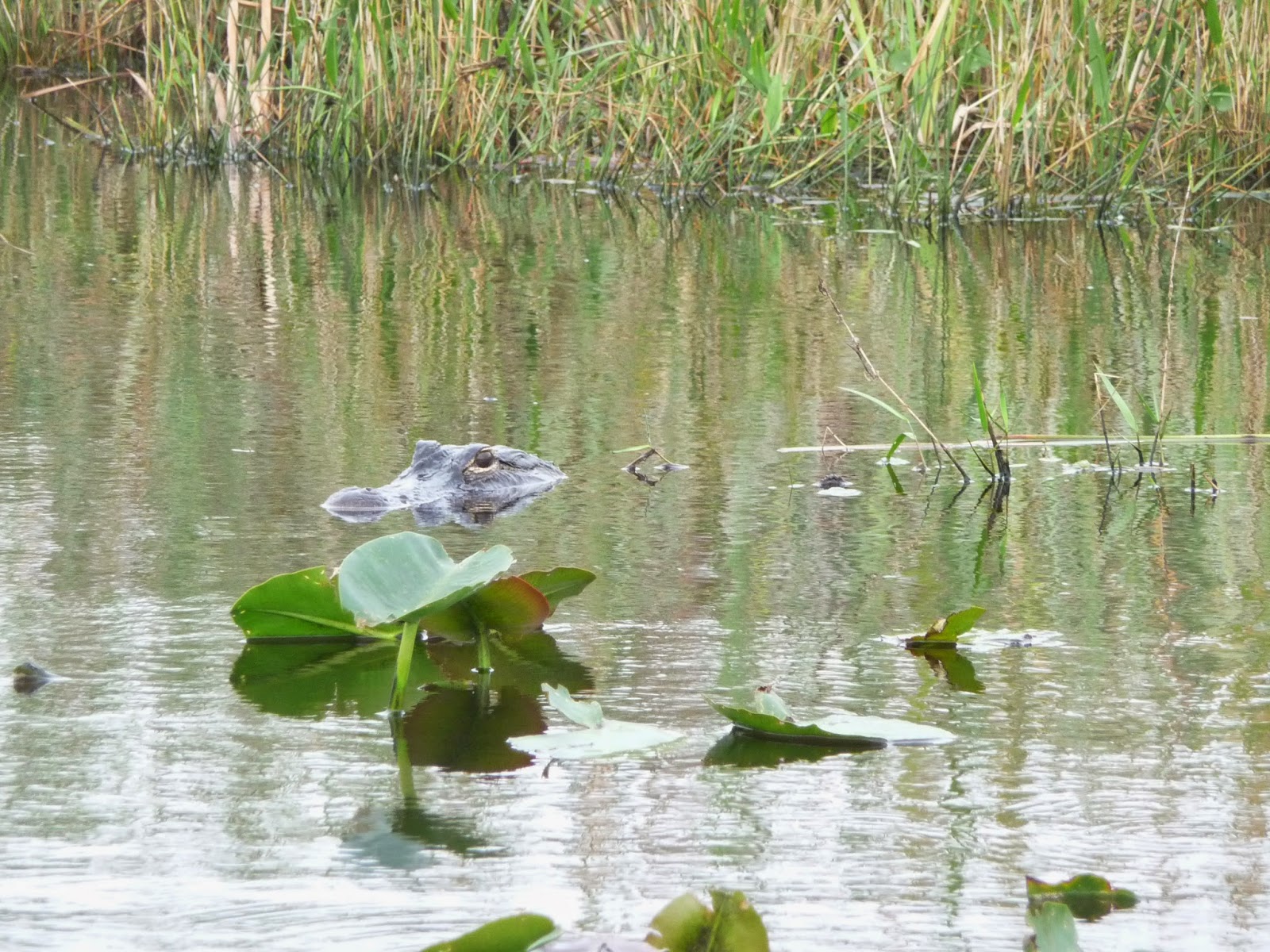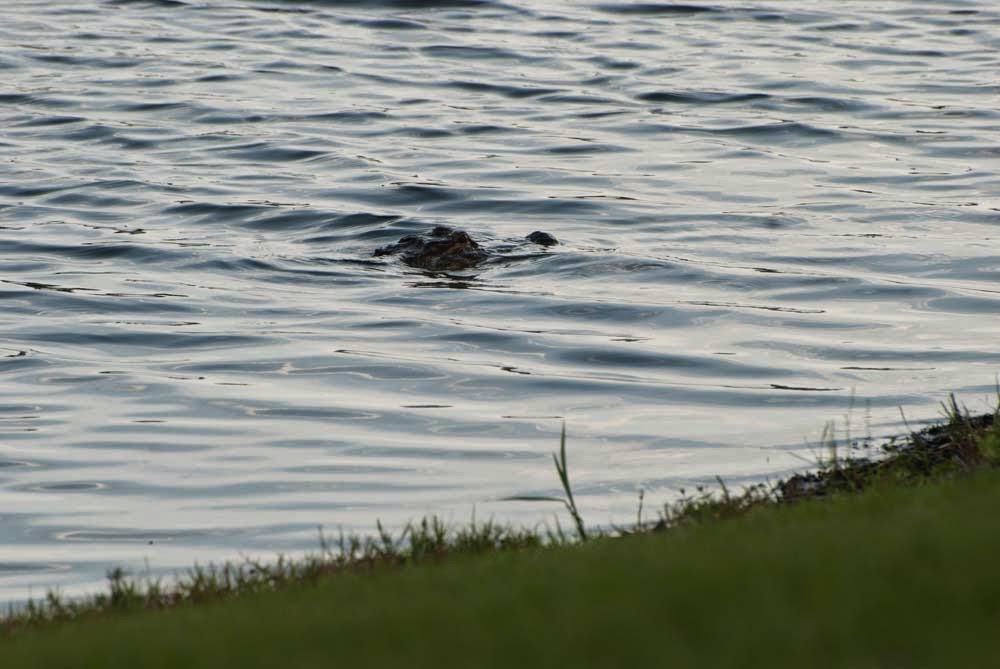Sea to Shining Sea part 8
Getting ready to depart the Keys when we
learned we would miss the big Seafood Festival on Marathon Key scheduled for
Saturday and Sunday. An annual event, the festival easily draws over 20,000
people each day.
Well…It’s an hour’s drive to Marathon
from Sugarloaf by car and longer by RV. That means we are leaving very early so
we miss all the traffic. Leaving at 8 a.m. is early for us now since we’ve
become accustomed to “island life”!
Maybe we didn’t quite make it by 8, but
we were close. We passed the festival site as it was being set up, well in
advance of the 10:00 start time. Cars were streaming in from both directions
all the way up into the mainland.
The drive to Miami Everglades RV Resort
was close to 3 hours, but we made good time and arrived earlier than their
posted check in time. Our sites were ready however, so we were able to pull
right in. This park appears to be an old KOA park, with the typical A-frame
office and brown cabins available for rent. We had great sites overlooking
about an acre of grass with a pickle ball court and swimming pool. A paved
walking path (represented to be a mile in length) bordered the entire perimeter
of the park. Dusty and Jerre and I made good use of it for our twice daily
walks.
 |
| 'Gator greeting guests |
As soon as we had lunch, we piled in the
car and headed to Monkey Jungle, another of Cheryl’s excellent suggestions.

“Monkey
Jungle is a wildlife park established in 1933 for the exhibition and study of
endangered monkeys in semi-natural habitats.” Over 400 animals roam free on 30
acres. In 1933 six Java monkeys were released into the wilds of a dense South
Florida hammock. (A hammock is an area in a swamp that is above the water
level.) Those six are the ancestors of the troop of 130 that runs free in
Monkey Jungle today. The Javas are omnivorous and swim and dive for shrimp and
crayfish. While we watched a trainer called the troop to a water feature by
ringing an old fashioned western dinner bell. As she gave information about the
monkeys she threw chunks of fruit and vegetables into the water and the
vegetation surrounding the pool. Slowly monkeys began to appear through the
bushes and rocks. They grabbed the pieces of fruit and scampered away to eat
it. The more adventurous went in the water to retrieve their prize.
 |
| The elder statesman and leader of the pack of Java Macaques |
 |
| Can I reach that without going swimming? |
Besides the Javas, there are 30 other species
on the reserve. An orangutan, lowland gorilla, Golden Lion Tamarin, gibbons,
guenons and spider monkeys are among the others.
 |
| "Mei" |
 |
| "King" |
While the monkeys run free,
their human guests are caged. Visitors walk through a maze of wire tunnels from
which hang small metal cups on long chains. Visitors put raisins or sunflower
seeds in the cups which the monkeys then pull up to retrieve the offerings. There
is definitely a pecking order among the monkeys as some were chased away. One
monkey waiting for a treat got a little frustrated when he wasn’t served. He
grabbed the wire roof and shook it violently making a big racket.
 |
| The caged animals |
 |
| Reeling in the prize |
Monday was reserved for an air-boat ride
in the Everglades. We drove out Hwy 41 where there are several air-boat
enterprises along the road. We stopped at Coopertown Air-boats and requested a
private boat. Mike was assigned as our driver and tour guide. We arrived just
as they were opening and before the crowds began appearing. Mike took us deep
into the Everglades, flushing out Great White Egrets, Great Blue Herons, Common
Wood Storks, Green Herons, Double Crested Cormorants, Anihingas, White Ibis,
Turkey and Black Vultures and a few others, as we sped along through the river
of sawgrass. He stopped in one pool at the convergence of several canals and
pointed our 20 alligators. They were hanging just below the surface of the
water and every now and then the eyes would clear the surface. Then they would
silently sink. When we finally pulled into the dock the place was alive with
people. We were very glad we had opted for a private tour.
 |
| Great White Egrets and one little Snowy |
 |
| Slinking just below the surface |
 |
| Hauling out in search of a snack |
 |
| Wood stork in flight |
 |
| Great Blue Heron |
The Everglades are part of a massive
watershed originating near Orlando and draining into Lake Okeechobee. Before
human activity in the Everglades it comprised the lower third of the Florida
Peninsula. The push to drain the Everglades dates back to the 1800s when early
settlers wanted to create farmland by digging canals that would draw off the water
and allow it to flow to the ocean. They thought it would be a simple project,
but soon learned they would need Federal help. The federal Swamp and Overflowed
Lands Act of 1850 gave the state title to all “swamped and submerged land” that
it could reclaim. The Florida legislature then encouraged settlement near Lake
Okeechobee using public money to entice private developers to drain the land.
By 1920 fewer than 900,000 acres of the 4000 square miles, had been
successfully drained. Having run out of money the state turned the project over
to the Army Corps of Engineers. The first project was an 85 mile dike around
Lake Okeechobee at a cost of $19,000,000 (twice the original estimate). It was
intended to alleviate flooding caused by hurricanes. It didn’t! Then, in 1933
The National Industrial Recovery Act provided $3.3 billion to be spent on
construction projects. By 1969 more than 1700 miles of canals and levees and 16
major pumping stations draining the land south of Lake Okeechobee were
completed, 10 years past deadline and $100 million over budget.
 |
| Blue Heron on one of the many man-made canals |
 |
| Hardwood tree growing on a hammock (an island in the just a few inches higher than the surrounding wetlands). |
The levees and canals have created
environmental problems by blocking the natural flow of water through the
Everglades. The water is contaminated by fertilizer and other run off and the
wetlands are half the size they were in the 1920s. After large rainstorms
excess water is diverted into brackish estuaries disrupting the food supply for
many of the coastal birds. In dry years when not enough water flows through the
Everglades the wetlands turn to dust.
In 2002 an agreement between Pres. Bush and Gov. Bush affirmed an $80
billion, 30 year federal plan to repair the Everglades and at least partially
restore the natural flow of water through the wetlands.
 |
| Our happy group |
Next stop – Riverside RV Park between
Arcadia and Port Charlotte. Another great park. Large, grassy lots positioned
around small lakes. Alligators in the lakes! Our resident ‘gator was out to
greet us when we pulled in, but we didn’t see him again. At one of the other
lakes in the park, I saw about an 8’ ‘gator sunning himself on the bank of the
pond. I guess they can just go wherever they want, but they don’t seem to
bother the residents at all. This is just a two day rest stop between
Everglades and the Crystal River area to break up what would otherwise be a
long drive.
 |
| Our own pond |
 |
| No kidding |
 |
| Our 'gator |
 |
| No gator in this picture. He must be at the other end of the pond! |
Arrival afternoon we had to drive down
to Ft. Myers to pick up my prescriptions. Then on the way back we stopped in at
a mattress store we found from their advertisement in the RV Park brochure.
They claimed they could make any size mattress in one day so we took them up on
it. At first, the owner said it would be 7-10 days. When Rob told him that
wouldn’t work since we were leaving in two days, he promised to make it in one
day.
Next day we went over to Punto Gordo for
lunch. Had a great lunch on the patio of Captain’s Table overlooking the water
of Charlotte Harbor. Rob and Stan went
back to the RV to await the mattress delivery while Jerre and I went shopping
in the boutique shops adjacent to our lunch spot.
 |
| We do seem to eat out a lot! |
The mattress was delivered as promised.
It’s longer than the previous mattress which was a concern as to whether it
would fit in the reduced space when the slides are brought in, but it fits
perfectly! Now Rob’s feet don’t hang over the end. The only downside is our
fitted bottom sheets don’t fit. A little alteration to a new set is needed, but
I have my sewing machine with me!
From Miami Everglades RV we moved to
Rock Crusher RV Park in Homosassa Springs . The RV Park is set in the forest
with spacious sites and, being a forest, lots of trees.
We picked this area
because of the Ellie Schiller Homosassa Springs Wildlife Park. This park has
four permanent resident Manatees that cannot be released to the wild. We,
again, decided to go early and were grateful that we did when hordes of excited
school children descended on the park.
 |
There is an underwater bowl for watching the fish in the river.
|
 |
| Snook seen through the fish bowl |
 |
| Munch-a-bunch |
 |
| Doing a slow roll in the middle |
 |
| Up for a breath of air every 20 minutes |
The Park is also home to a variety of
native Florida wildlife, most of which cannot be released to the wild. A
panther found motherless when he was four days old is now over 1 and still
tries to play with his handler like a kitten.
 |
| Yuma |
 |
| Finally got a good picture of a Roseate Spoonbill in the aviary of captive birds |
By now the screaming hordes were everywhere
and we decided to find a place to have lunch. We wandered into Homosassa and
found a restaurant on the river. We were escorted to a table overlooking the
river and as we sat down we observed two wild manatees below in the water
making their way slowly into the river. How serendipitous! As we ate, we
watched while “manatee watchers” wearing wetsuits piled into boats, hoping to find
some manatees to swim with.
Tomorrow we’ll be back at Ho Hum RV Park
in Carrabelle, Fl.and we hope the weather will be warmer than it was in
February.

































No comments:
Post a Comment